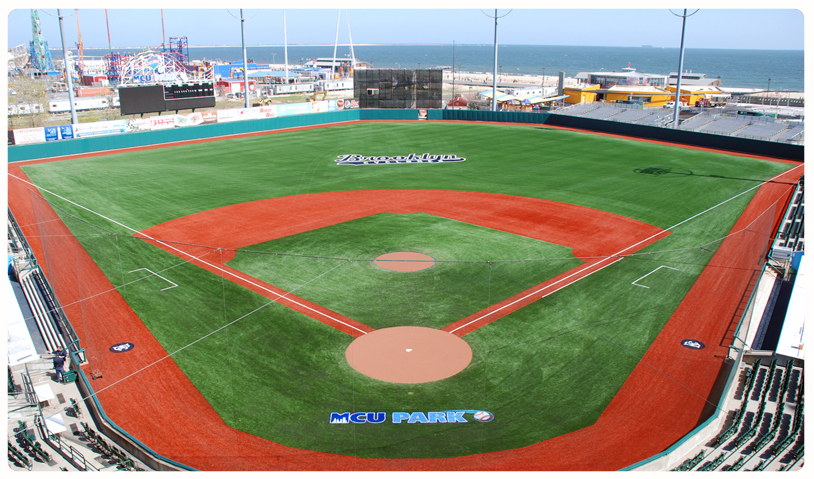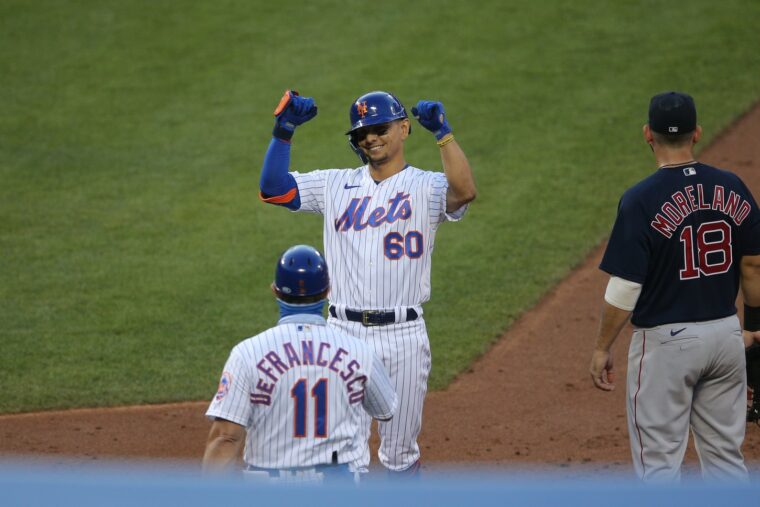
Billy Hamilton had just arrived in New York from Sacramento, bleary-eyed from the cross-country flight the day before after the Mets acquired him from the San Francisco Giants.
A day later he’ll be back on the move, joining the major league team in Washington D.C. after a travel nightmare: a canceled flight and a four-hour trip with a car service. He could have taken the train, but Hamilton had seen too many episodes of Criminal Minds, he said, and was not about to risk a Tuesday afternoon Amtrak seige.
Sandwiched in between his two adventures, less than 48 hours apart, Hamilton had taken eight at-bats against live pitching.
“I wasn’t expecting that much right out the gate,” the veteran outfielder said.
It was possible because of the situation that is not unique to the Mets but is most certainly characteristic of baseball in 2020. In the absence of functioning minor leagues, teams have sent their prospective call-ups to the “Alternate Training Site.”
For the Mets, that means a group of around 20 players show up to MCU Park in Coney Island every morning. What unfolds over the course of each day isn’t exactly a state secret but it’s much closer to that end of the spectrum than the happenings of the Brooklyn Cyclones, which typically occupy the ballpark during the summer.
Save for a modicum of pictures and video that have trickled out of Brooklyn, all that is known is who is there and what their activities include. Reports on individual performance are nonexistent to the outside. Inside, however, the communication between the on-site staff and major league decision makers has been constant.
“They’re simulating the games, they’re doing different things to keep it at game speed, they’re doing the fundamentals,” Mets manager Luis Rojas said. “They’re doing all things they need to do in order for the guys to stay up to speed. They’re doing a great job.”
Johneshwy Fargas (HR) – 7/31/2020 #Mets pic.twitter.com/GpXZ0jQSa9
— Mets MiLB Videos (@MetsMiLBVideos) August 13, 2020
Rojas’ counterpart in Brooklyn is Kevin Boles, the second-year member of the organization who, after replacing Rojas as Double-A Binghamton’s manager in 2019, was set to serve as the Mets’ minor league field coordinator this season.
Boles is in charge of the Alternate Site’s on-field instruction, which includes scheduling, overseeing fundamental work, and managing daily simulated games. He’s flanked by Ricky Meinhold, the Mets’ progressively-minded pitching coordinator.
If Boles is Rojas then Jared Banner is Brodie Van Wagenen. Banner is the organization’s executive director of player development and is constantly in the ear of the general manager, consulting on potential promotions and ensuring that the Mets’ development plan is adjusting to the constraints of the new normal.
“It’s great communication,” Rojas said. “It’s constant. We get emails every day from their schedule, what they’re doing. It’s tough times, it’s a different set-up, but they’re making the most of it there so kudos to that group that’s working with the guys there and the players staying in shape as well.”
Though MCU Park can only accommodate as many players as its one field allows, the Mets are able to make use of the home and visitor bullpens and batting tunnels inside the clubhouse.
To maintain social distancing, the team has converted certain areas of the ballpark, like the lobby and gallery that typically hosts groups for Cyclones games, into makeshift workout rooms.
Each organization has taken a different approach to building their 60-man Player Pools but it’s safe to say the Mets have been on the conservative side when it comes to bringing simultaneously highly-regarded and far-away prospects to the Alternate Site.
The Mets have chosen to focus on veterans and more experienced minor leaguers that could potentially help the major league team instead of ensuring that top farmhands, like Ronny Mauricio, Francisco Alvarez, and Matthew Allan, aren’t missing out on an entire year of development.
“This team is built to win,” Van Wagenen said earlier in the summer. “Our intention is to have players in camp that we think are capable of helping us at the major league level this year.”]

Brad Penner/USA Today
As currently constructed, the Mets’ 40-man roster includes a number of players who still hold prospect status: Andrés Giménez, Franklyn Kilomé, David Peterson, Ali Sánchez, and Thomas Szapucki.
Among non-roster invites to the Pool, the only organizational stalwarts included in the initial group were Kevin Smith and Patrick Mazeika. In the weeks since, Matt Blackham, Quinn Brodey, Luis Carpio, and Ryley Gilliam have been added. All have at least Double-A experience but none are among the organization’s most promising.
Between those players and the plethora of veterans that have been brought in as depth, the group as currently constructed almost resembles a run-of-the-mill Triple-A squad. Then you remember that they can only play against themselves and won’t be making any hours-long bus trips.
“It doesn’t feel like it’s a Triple-A team, it feels like it’s a parallel team from us,” Rojas said. “When you have a Triple-A team you’re able to see every game report that they’re facing another team, so it’s different.”
Though their situation pales in comparison to the Miami Marlins, a number of early-season injuries have forced the Mets to dip into the Pool quite often and pull from the Brooklyn group. Brian Dozier, Ryan Cordell, Sánchez, Peterson, and Kilomé were all sent to MCU before their promotions.
Brooklyn hasn’t just been used as a training ground for call-ups. The relaxed nature of the simulated games has allowed for rehabbing major leaguers like Robinson Canó and Jake Marisnick (among plenty others) to take twice the amount of live at-bats than they would in a minor league game during a normal season.
With the future of the minors already having been hazy and unclear, the situation that forced Major League Baseball into the adjustments for 2020 only accelerated the timeline on which prospect development will shift. The Mets might be better suited to deploy their depth pieces this season because getting the hands-on instruction available in Brooklyn cannot be replicated over Zoom.
Though space is limited (only 60 players are allowed in the total Pool, including active major leaguers, and removal requires an exit from the organization first), there remains a possibility that the organization’s blue-chip players enter the fold, perhaps in September.
Even then, it’s hard to know if workouts in Brooklyn will equate to the run of a minor league season in the long term.















